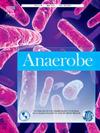Clostridioides difficile in Australian dairy farms
IF 2.6
3区 生物学
Q3 MICROBIOLOGY
引用次数: 0
Abstract
Objectives
This study aimed to investigate the prevalence and diversity of C. difficile in Australian dairy farms.
Methods
A total of 320 samples, including faeces, rectal swabs, effluent, soil and water, were collected from seven dairy farms across two Australian states.
Results
C. difficile was present in all seven farms (100 %) and 44.4 % of the samples tested, with the highest prevalence found in soil (94.3 %), effluent (73.7 %) and faeces (60.4 %). Forty-four distinct ribotypes were identified among 174 isolates, of which 17 have been found previously in humans. C. difficile ribotype (RT) 127 (A + B + CDT+) was the predominant strain, comprising 42.5 % of isolates. The findings also indicated that the environment of Australian dairy farms is persistently contaminated with C. difficile, especially RT 127 and may represent a potential source for zoonotic transmission.
Conclusions
C. difficile may be widespread in Australian dairy farms, with notably high prevalence in both animals and environmental samples.
澳大利亚奶牛场中的艰难梭菌。
目的:本研究旨在调查艰难梭菌在澳大利亚奶牛场的患病率和多样性。方法:从澳大利亚两个州的七个奶牛场收集了总共320份样本,包括粪便、直肠拭子、污水、土壤和水。结果:艰难梭菌在所有7个养殖场(100%)和44.4%的检测样本中均存在,其中土壤(94.3%)、污水(73.7%)和粪便(60.4%)中患病率最高。在174株分离株中鉴定出44种不同的核糖型,其中17种以前在人类中发现过。艰难梭菌核糖型(RT) 127 (A+B+CDT+)为优势菌株,占42.5%。研究结果还表明,澳大利亚奶牛场的环境持续受到艰难梭菌污染,特别是RT 127,可能是人畜共患疾病传播的潜在来源。结论:艰难梭菌可能在澳大利亚奶牛场广泛存在,在动物和环境样本中都有很高的流行率。
本文章由计算机程序翻译,如有差异,请以英文原文为准。
求助全文
约1分钟内获得全文
求助全文
来源期刊

Anaerobe
生物-微生物学
CiteScore
5.20
自引率
8.70%
发文量
137
审稿时长
76 days
期刊介绍:
Anaerobe is essential reading for those who wish to remain at the forefront of discoveries relating to life processes of strictly anaerobes. The journal is multi-disciplinary, and provides a unique forum for those investigating anaerobic organisms that cause infections in humans and animals, as well as anaerobes that play roles in microbiomes or environmental processes.
Anaerobe publishes reviews, mini reviews, original research articles, notes and case reports. Relevant topics fall into the broad categories of anaerobes in human and animal diseases, anaerobes in the microbiome, anaerobes in the environment, diagnosis of anaerobes in clinical microbiology laboratories, molecular biology, genetics, pathogenesis, toxins and antibiotic susceptibility of anaerobic bacteria.
 求助内容:
求助内容: 应助结果提醒方式:
应助结果提醒方式:


